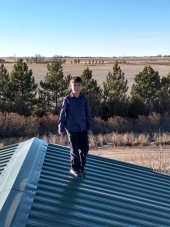
 1
1




 4
4





 1
1




 1
1




Invasive plants are Earth's way of insisting we notice her medicines. Stephen Herrod Buhner
Everyone learns what works by learning what doesn't work. Stephen Herrod Buhner




Moderator, Treatment Free Beekeepers group on Facebook.
https://www.facebook.com/groups/treatmentfreebeekeepers/





 2
2




Anne, here in the PNW there's a difference between a tree which will re-sprout from a stump, and what we call a "living stump" which is where bark grows over the top of the stump. These latter stumps have no "leaves" of their own, but their root systems are intact and continue to support and be supported by the surrounding forest ecosystem. I suspect in my area of summer droughts, these living stumps likely have roots into something the forest likes/needs like water, which makes it worth maintaining the relationship and feeding the stump whatever it needs to keep those roots healthy.Anne Miller wrote:The tree species might be a big determining factor as I remember cedar and pine might not revive as well as a deciduous tree.
We have had mimosa trees and mesquite trees that grew from stumps.
They may or may not be a pretty tree.
Visit Redhawk's soil series: https://permies.com/wiki/redhawk-soil
How permies.com works: https://permies.com/wiki/34193/permies-works-links-threads
 1
1




Invasive plants are Earth's way of insisting we notice her medicines. Stephen Herrod Buhner
Everyone learns what works by learning what doesn't work. Stephen Herrod Buhner
 1
1




Michael Cox wrote:It sounds interesting, if nothing else. I'm not sure WHY you want to do this though?




Jay Angler wrote:I suspect in my area of summer droughts, these living stumps likely have roots into something the forest likes/needs like water, which makes it worth maintaining the relationship and feeding the stump whatever it needs to keep those roots healthy.




I know that trees in my forest harvest from dead stumps by sending rootlets into the decaying wood.also seems good not to waste that valuable root/fungi system -- if the living stump doesn't pan out i think i'll plant a new tree one foot over
Visit Redhawk's soil series: https://permies.com/wiki/redhawk-soil
How permies.com works: https://permies.com/wiki/34193/permies-works-links-threads

|
Does this tiny ad look rabid to you?
How-To Home Soil Tests by Leigh Tate
https://permies.com/t/158437/Home-Soil-Tests-Leigh-Tate
|





